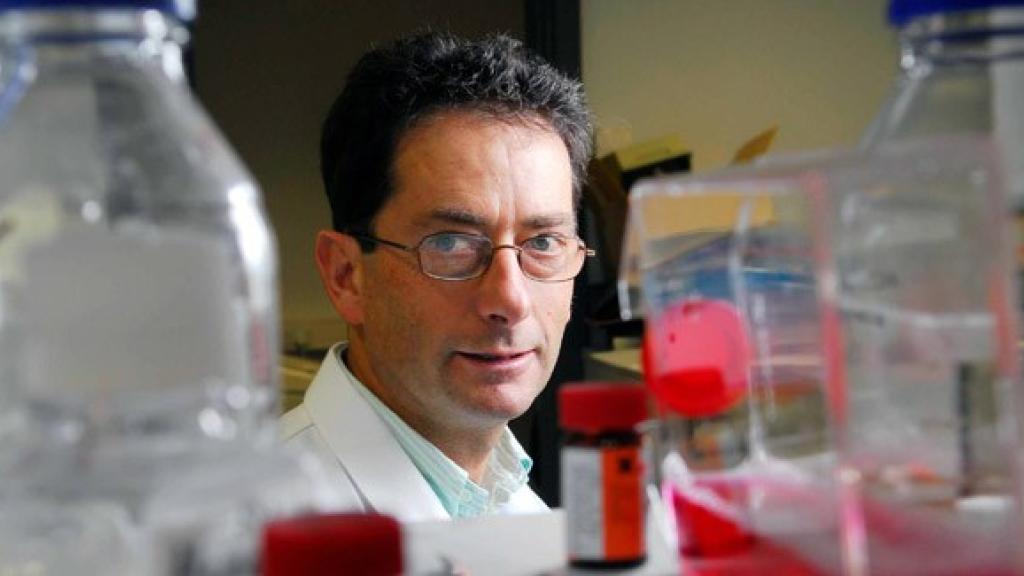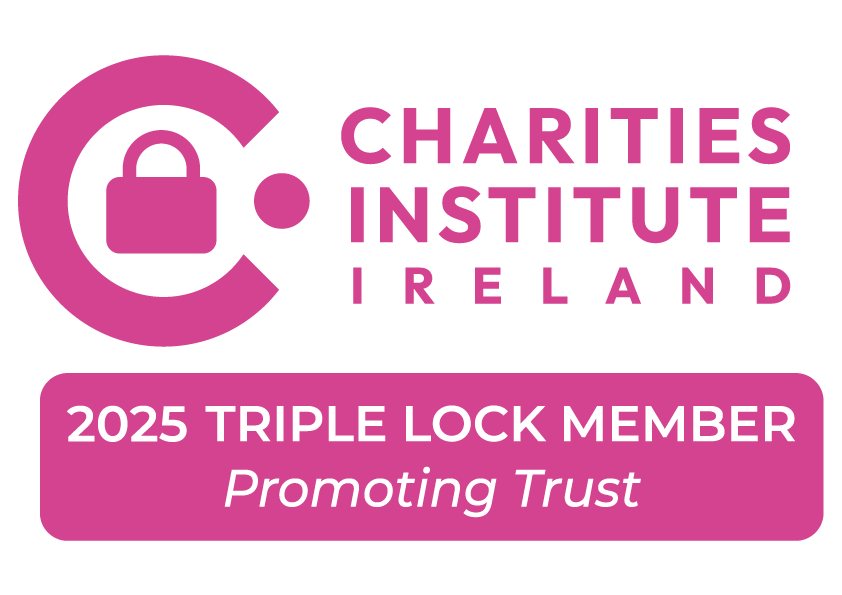
Success in Leukaemia research
According to the latest data available, more than 480 cases of leukaemia are diagnosed in Ireland each year. One of the four major forms of leukaemia, chronicmyeloid leukaemia (CML), has become a model for cancer research as it was the first cancer to be linked with a specific DNA abnormality more than 50 years ago2. Since then, advances in our understanding of the biology of this disease have led to targeted treatments and increased survival. Our research has played a part in this amazing journey. In the early 1990s, Professor Tom Cotter (pictured), whose research was funded by the Irish Cancer Society, made a number of landmark discoveries. These discoveries not only advanced the field of leukaemia research, but also had major implications for the understanding and treatment of a number of human diseases.
Discovery of a ‘suicide’ gene
In 1992, Professor Tom Cotter at University College Cork discovered a ‘suicide’ gene, c-myc that is important in many cancers and also in other human diseases.
This suicide gene is present in normal cells and it becomes activated when cells reach their ‘sell-by-date’ and are instructed to dispose of themselves in a highly-organised way, known as apoptosis or controlled cell death.
The researchers showed that the cancer cells escape cell death by switching off these suicide genes. Most importantly, this discovery also allowed the switching on of these suicide genes in cancer cells, by turning off genes that control them and prevent many cancer cells from dying3.
Abnormal leukaemia gene prevents cells from dying
Just two years later, Professor Cotter made another breakthrough in the area of leukaemia. Chronicmyeloid leukaemia(CML) is caused by an abnormal arrangement of DNA in blood stem cells. This abnormal DNA then creates an abnormal gene called Bcr-Abl, which drives the growth of these leukaemia cells. Professor Cotter identified that this gene in chronic myeloid leukaemia prevents the leukaemia cells from committing suicide and so allows them to live long past their sell-by-date4.
Worldwide impact of this research
Together, these two discoveries have been referred to by well over 1,000 research laboratories from around the world. The findings of Professor Cotter’s research, funded by the Irish Cancer Society, represented a significant advance in the knowledge of how cells die in the body and had major implications for the understanding and treatment of cancer.
Professor Cotter’s findings in chronic myeloid leukaemia contributed greatly to understanding the role of Bcr-Abl in this disease. Following his discovery in 1994 this gene went on to become the target of the first cancer drug to specifically kill CML cells. This drug This drug Gleevec© works by targeting and turning off Bcr-Abl and other proteins in cancer cells preventing the cancer cells from growing and multiplying.
It was approved for treating chronic myeloid leukaemia patients in 2001 and has significantly increased the relative five year survival rate for this disease5. It has also since been approved for treating a number of other cancers including gastrointestinal stromal tumours which cannot be surgically removed and/or have spread to other parts of the body.
N.B no clinical evidence to support increased 5 year relative survival rate for GIST
What next for this research?
Professor Tom Cotter’s research team in University College Cork continue to carry out world-class research into leukaemia. In 2010, an Irish Cancer Society Research Scholarship was awarded to William Landry who started a PhD in cancer research under the supervision of Professor Cotter.
William’s project involves looking at the role of a molecule called hydrogen peroxide that seems to help leukaemia cells to survive. This is almost counterintuitive as hydrogen peroxide is a molecule that at high concentrations can be quite damaging to cells. However, several different cancer cells seem to produce it at low concentrations and this is linked to an increase in their ability to survive6,7. The project investigates where the hydrogen peroxide is produced in the cancer cell, what system makes it and how it helps the cancer cell to become stronger. This research uses a variety of techniques in the effort to solve this problem. The outcome of this work will not only help understand why leukaemia cells survive but also shed light on other cancer types as well.
Further success in leukaemia research
Chronic Lymphocytic Leukaemia
Chronic lymphocytic leukaemia (CLL) is the most common leukaemia in the western world8. While some progress has been made in developing new treatments for this disease, resistance and recurrence of the disease mean that new approaches need to be found. In Ireland Irish Cancer Society funded researchers in Trinity College Dublin are among those paving the way in new approaches for treating this cancer.
New way to kill leukaemia cells
Recently researchers funded by the Irish Cancer Society identified a new way of killing leukaemia cells, including those resistant to current therapies. Their findings were published in 2009 in the renowned international journal Cancer Research. The researchers from Trinity College Dublin described how a new drug, pyrrolo-1,5-benzoxazepine-15 (PBOX-15), is highly effective in killing chronic lymphocytic leukaemia cells, including those from patients with poor prognosis,while at the same time sparing normal blood cells9.
PBOX-15 is one of a number of PBOX chemicals which were developed by a team of chemists from Trinity College Dublin and the University of Siena. This new drug works by interfering with the structure of the cancer cell and by activating key targets that trigger them to die. PBOX-15 was tested in samples isolated from 55 chronic lymphocytic leukaemia patients, and was shown to be more effective than the existing therapy, fludarabine. The most exciting element of this research was that PBOX-15 also killed chronic lymphocytic leukaemia cells that were resistant to existing treatments, including chemotherapy.
This collaborative research project involving researchers across the different disciplines of chemistry, biochemistry and molecular medicine at Trinity College Dublin, together with researchers at University of Siena and Belfast City Hospital is continuing under the supervision of Professor Paul Browne. In addition to Irish Cancer Society funding, this research project is also supported by Science Foundation Ireland, Enterprise Ireland and the Higher Education Authorities Programme for Research in Third Level Institutions (PRTLI).
The Irish Cancer Society looks forward to following the progress of this research project in this promising area of research.
